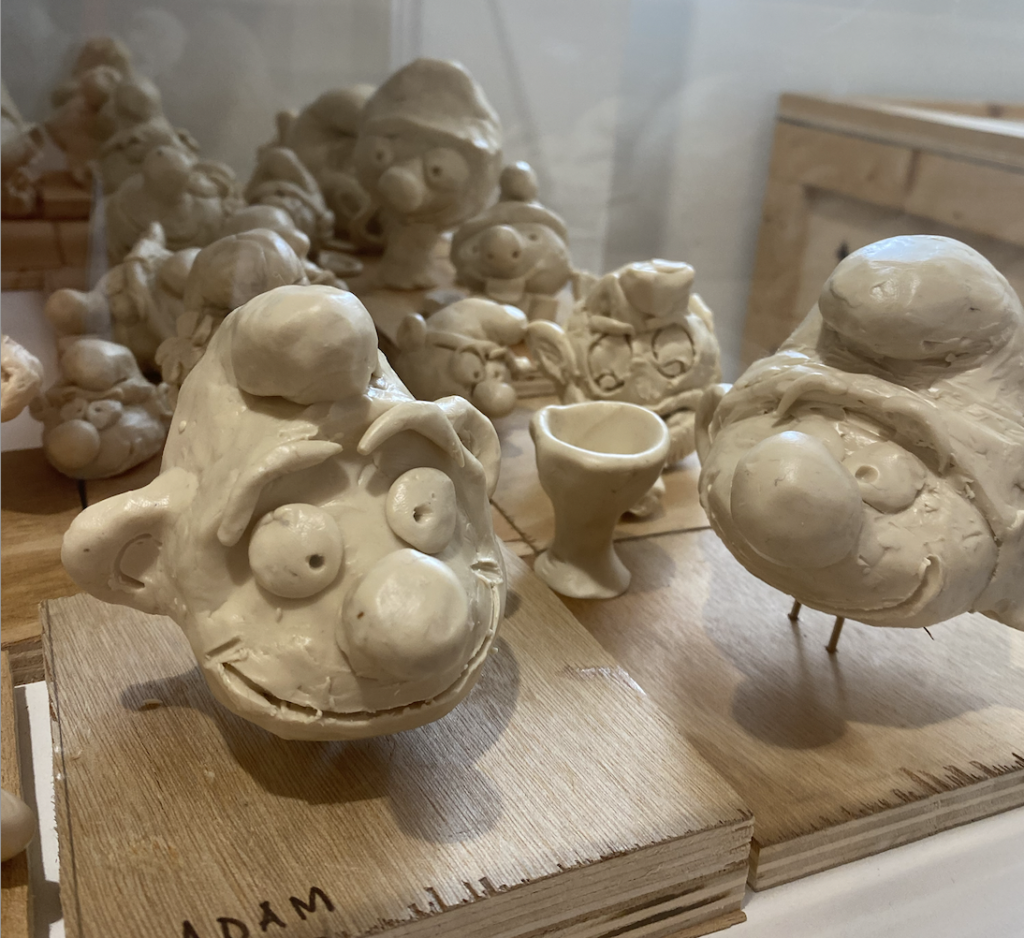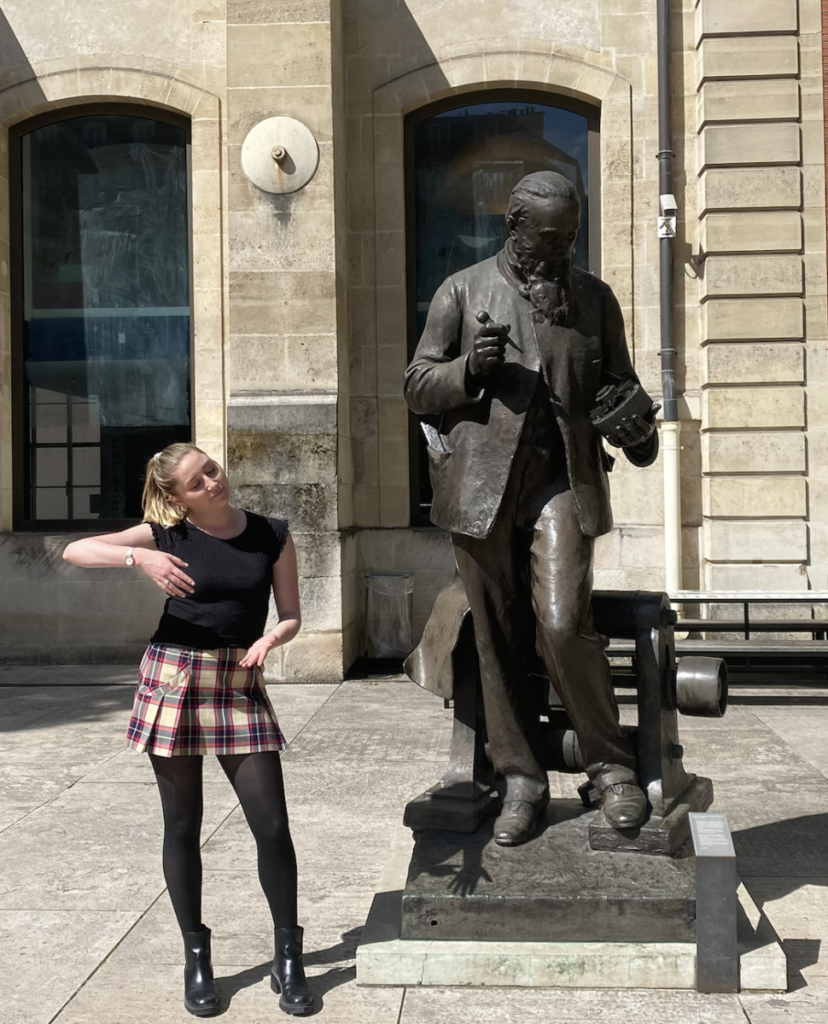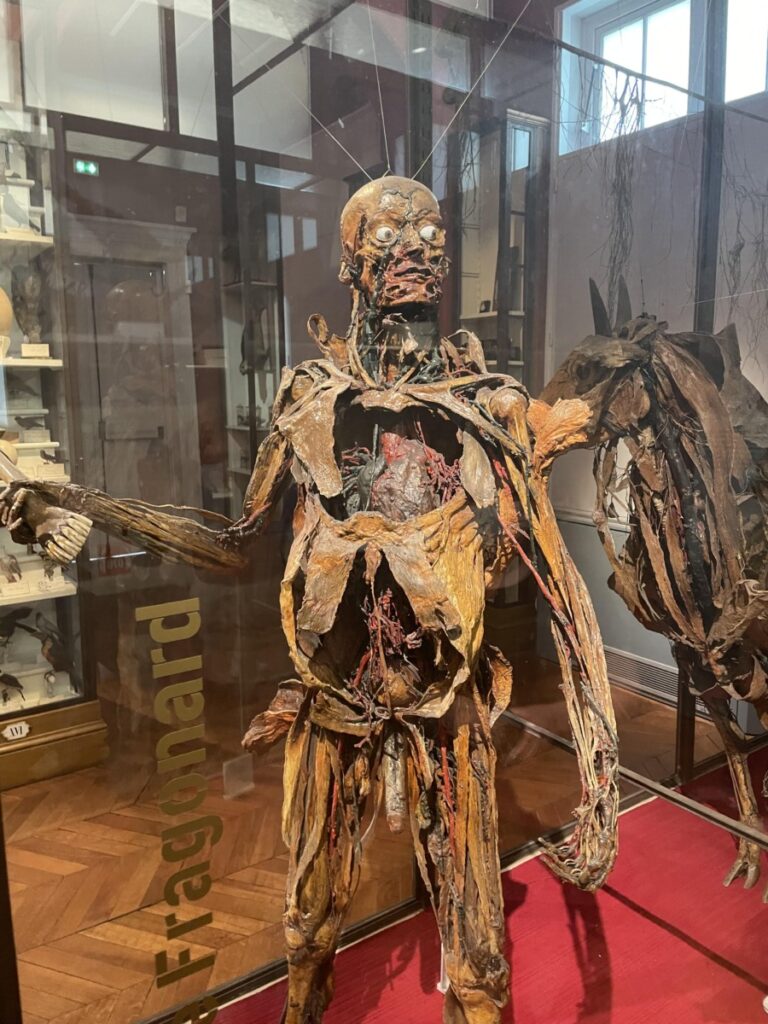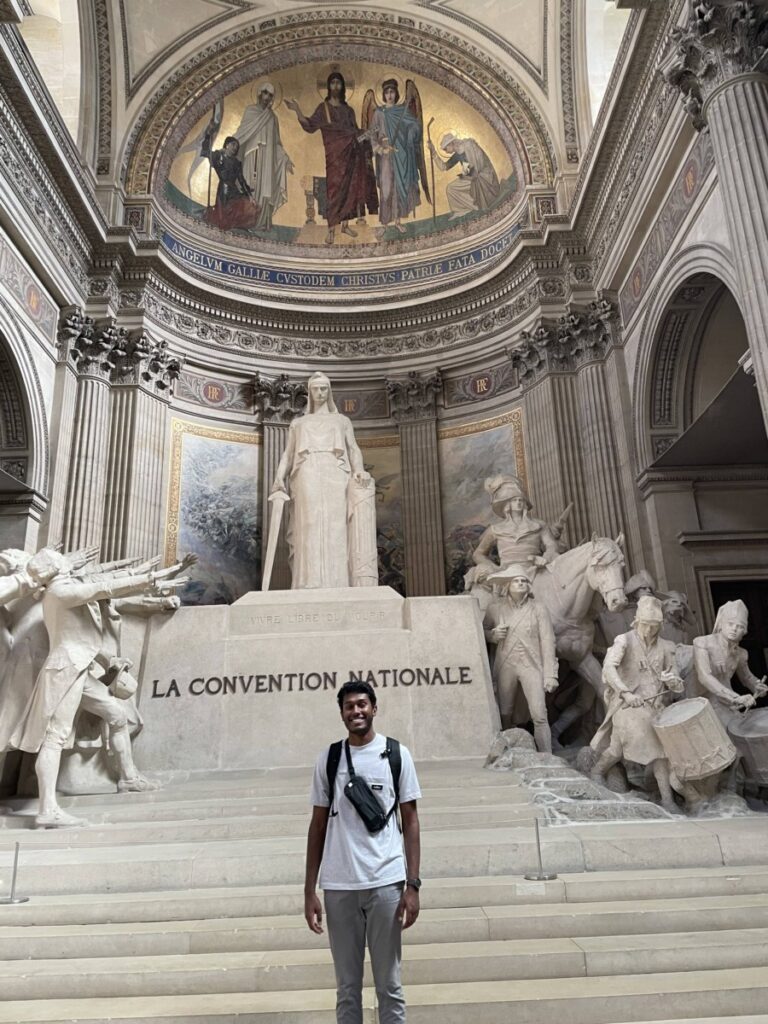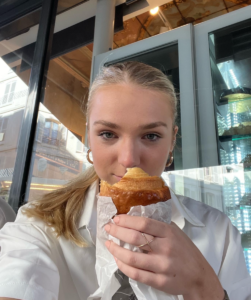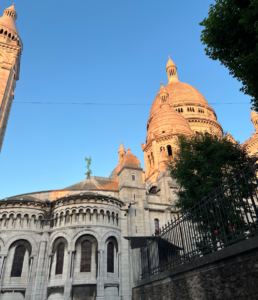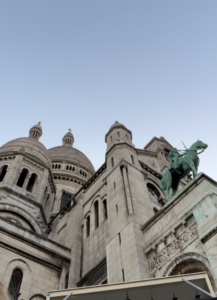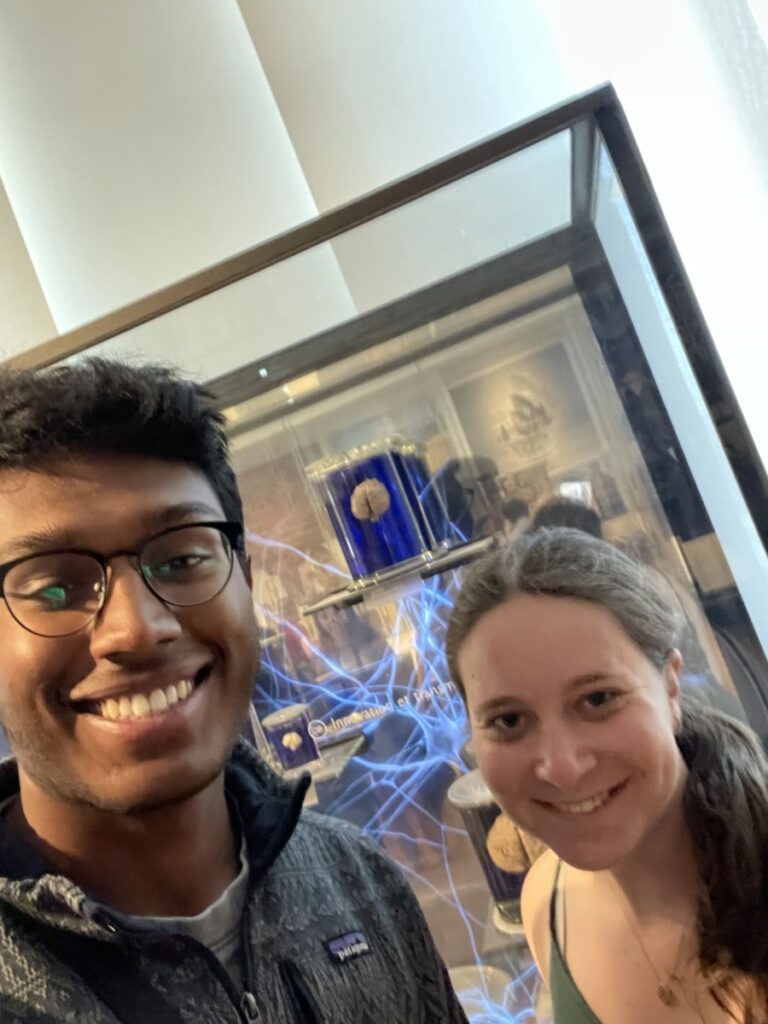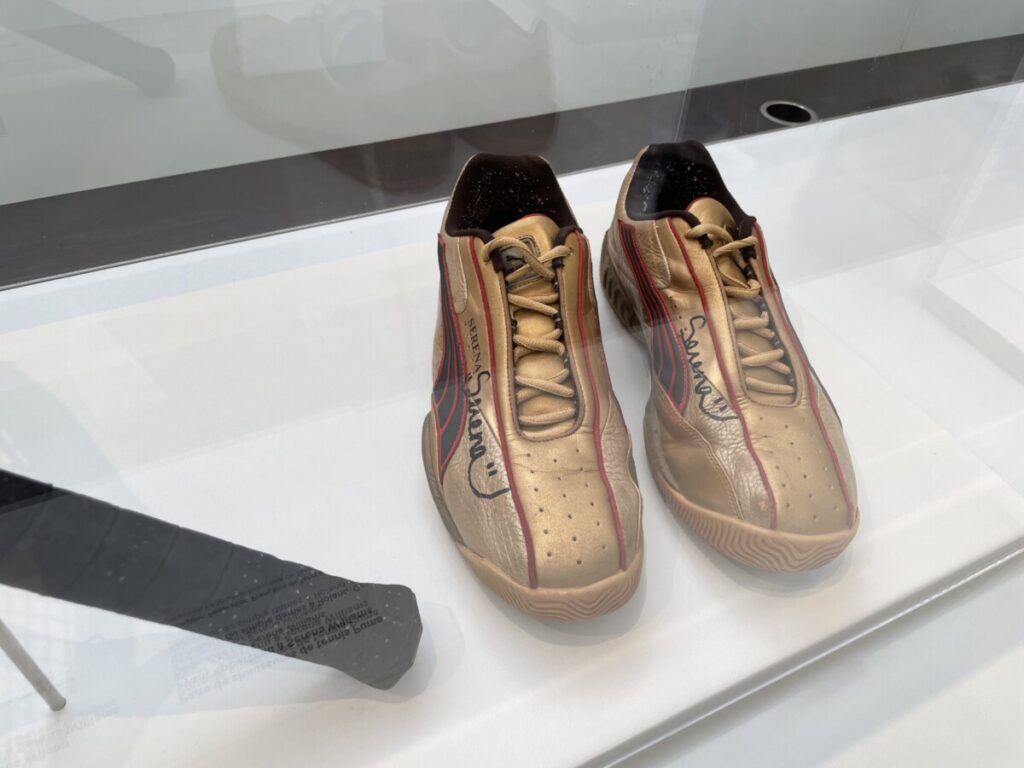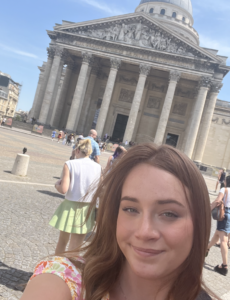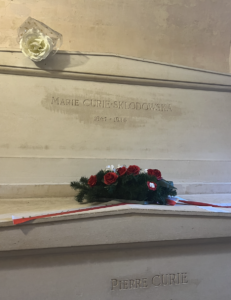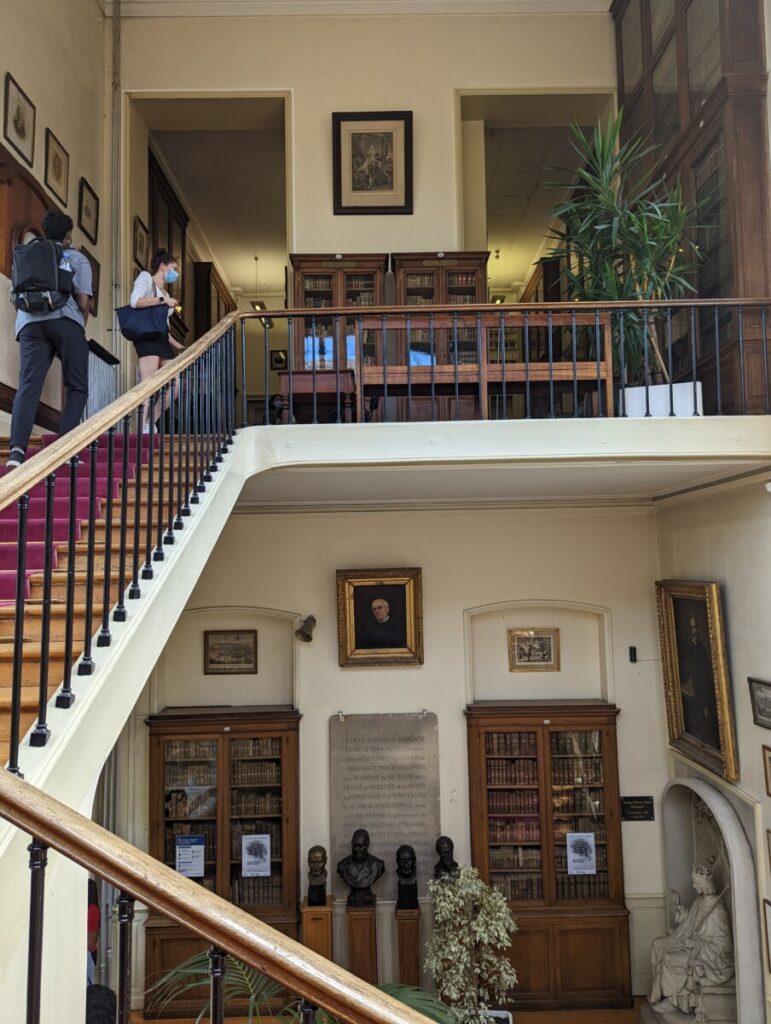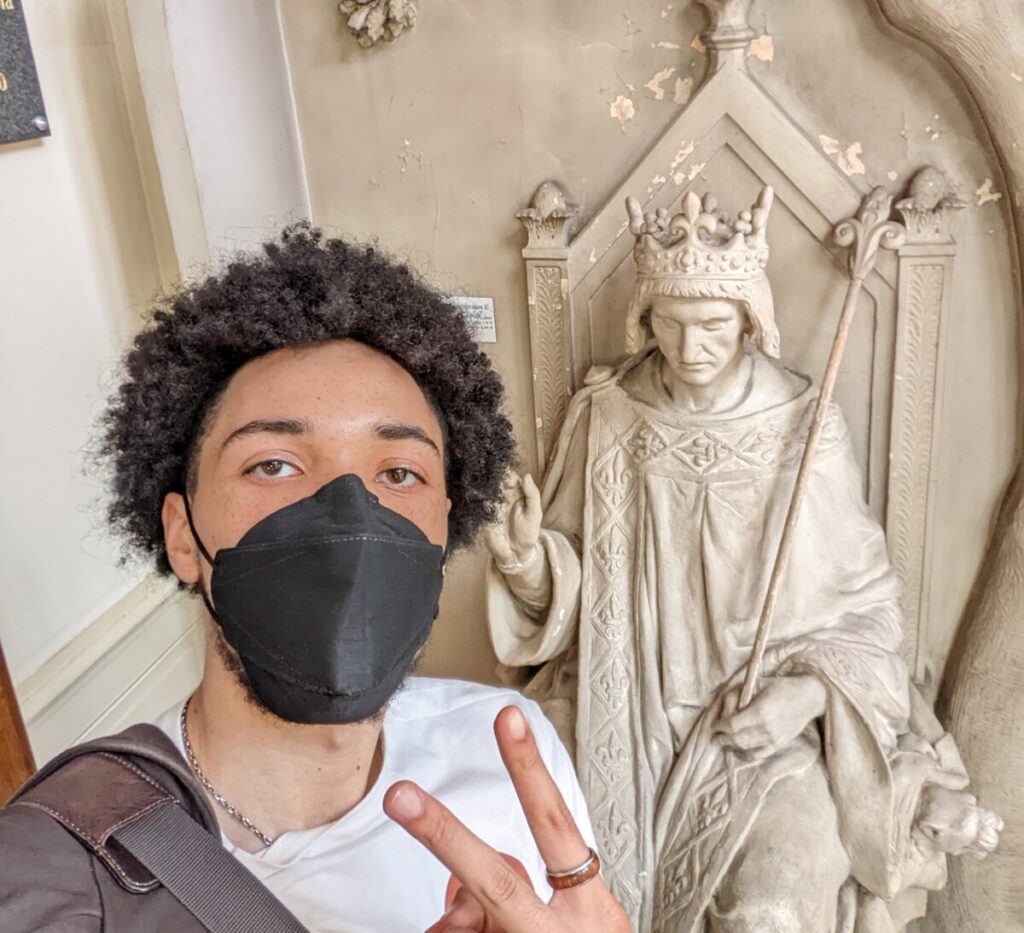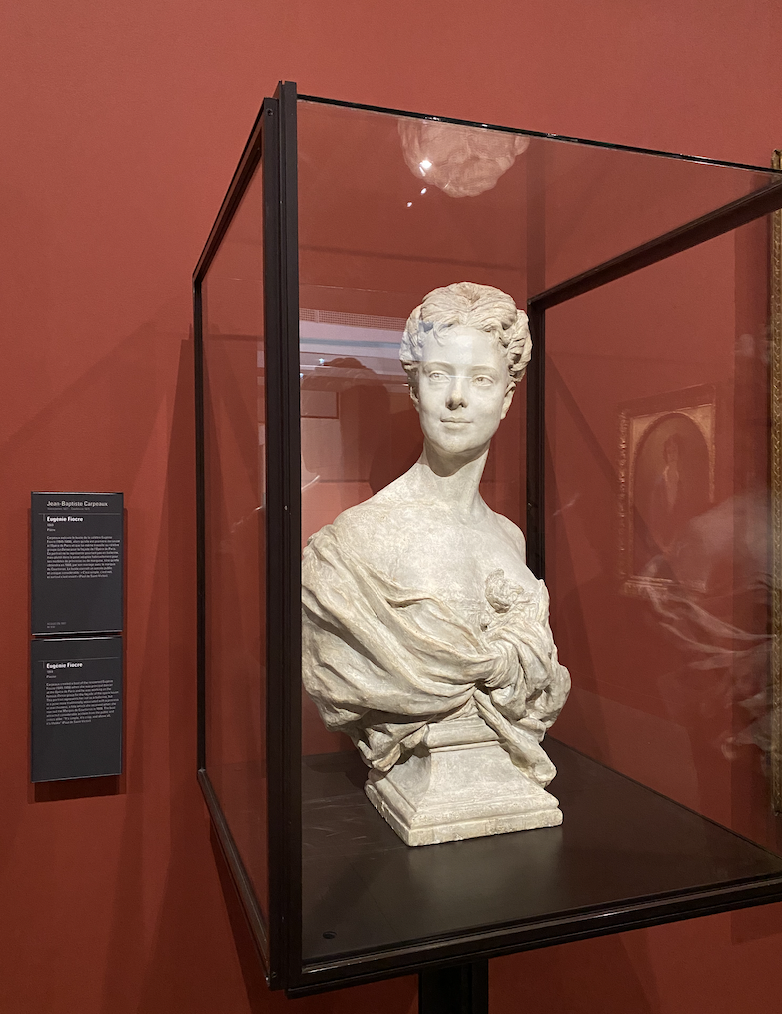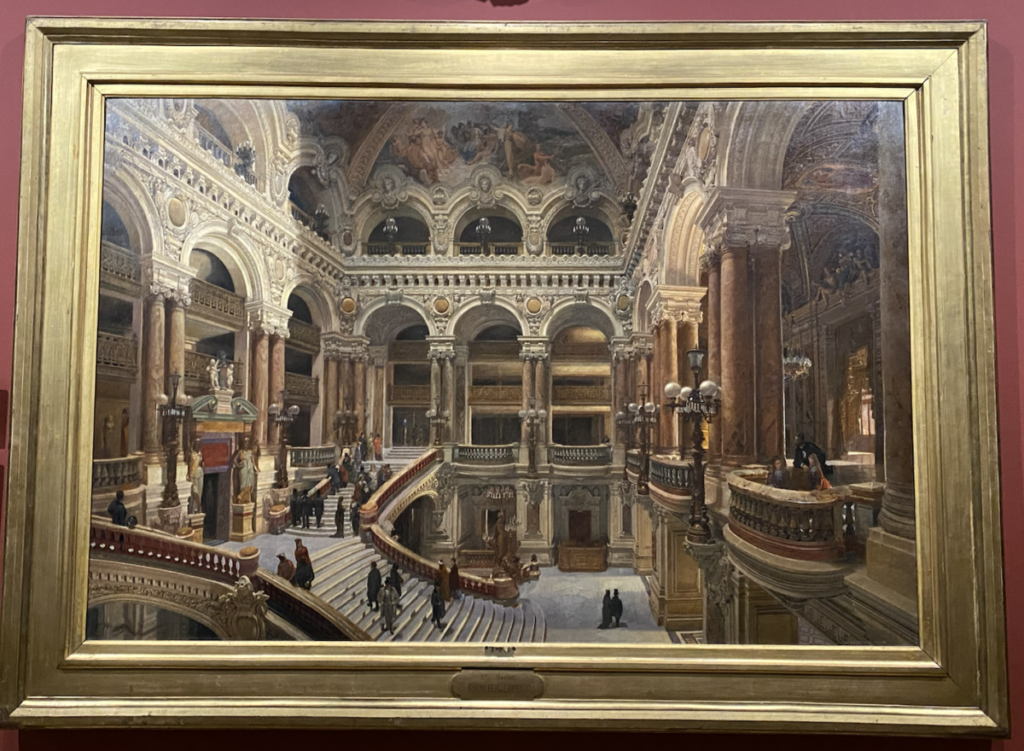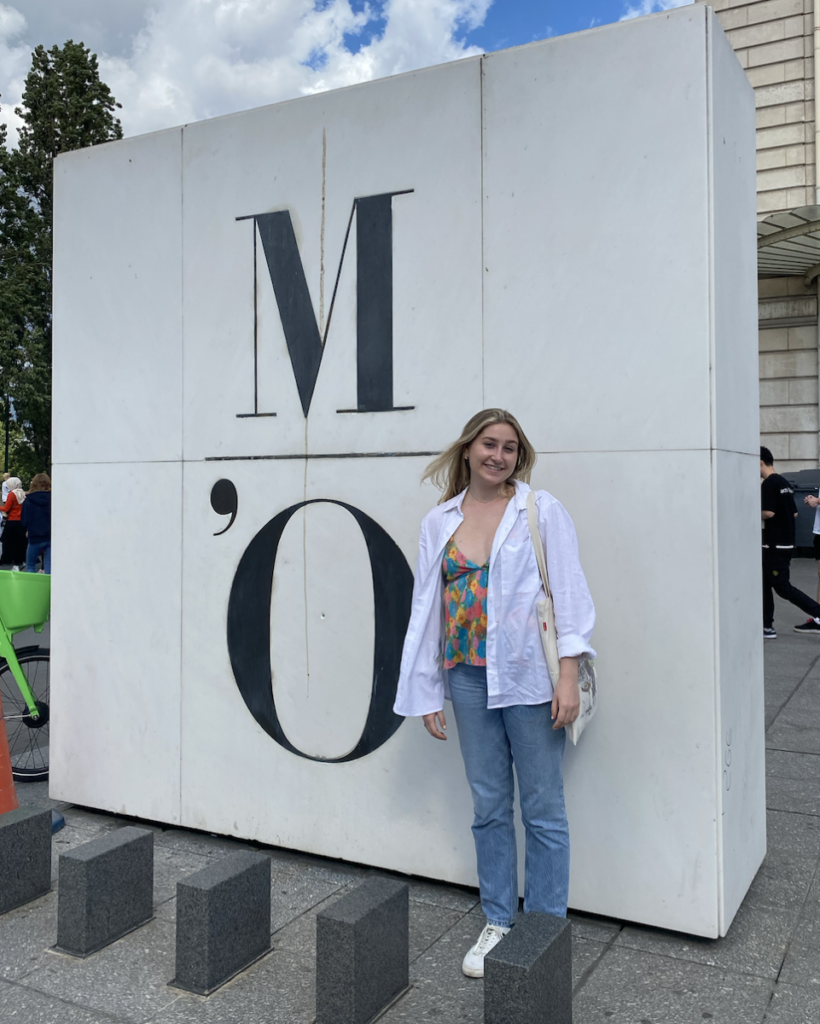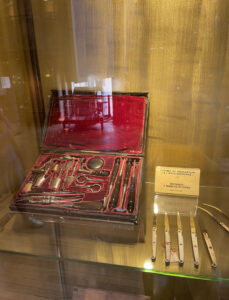By Duke McDaniels
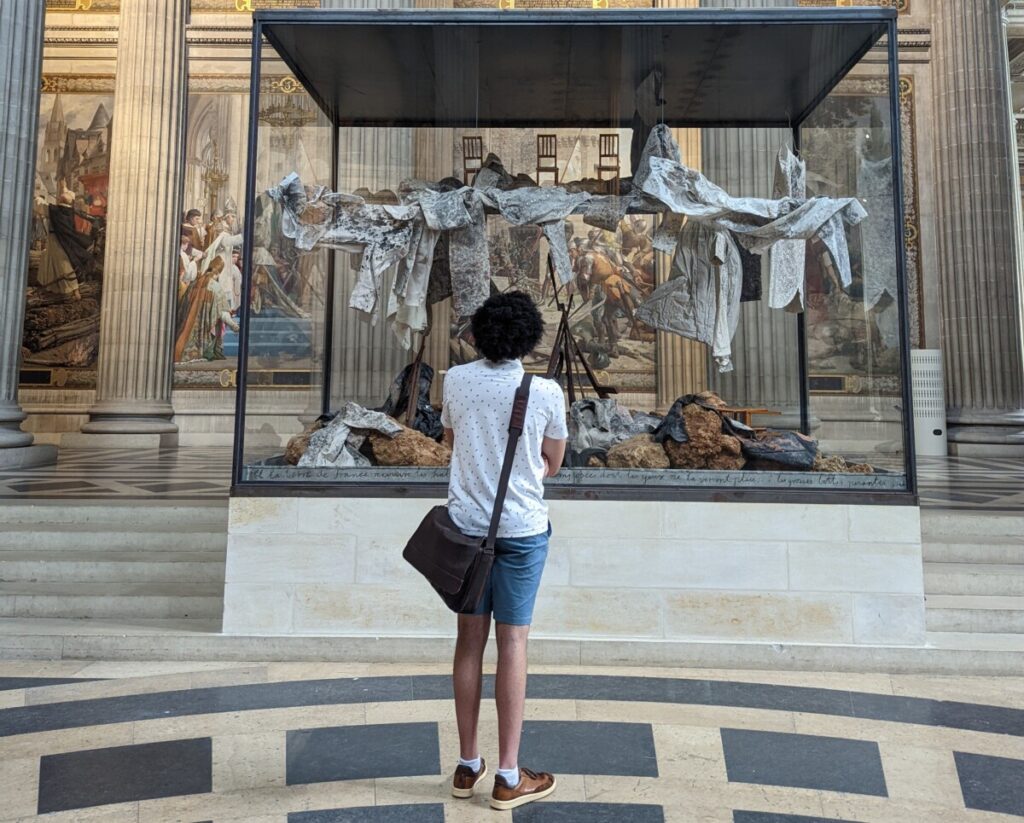
The art contained within the Pantheon was, to me, probably the most exciting part of the visit. Having already spent time with dead people at the start of our trip, I was pleasantly surprised to discover that the main floor of the historic building was filled with art of varying levels of ambition and scale. While I obviously knew that crypts are typically underground and therefore the one we had discussed within the building was unlikely to be located right at the front door, I didn’t expect the rest of the building to be quite as well-furnished with interesting things to look at. The massive columns supporting the structure were adorned with intricately-carved stonework, the large, echoing chambers themselves had sculptures and art exhibitions of varying sizes on display, and the stone walls of the interior were covered almost end-to-end with beautifully-painted murals.
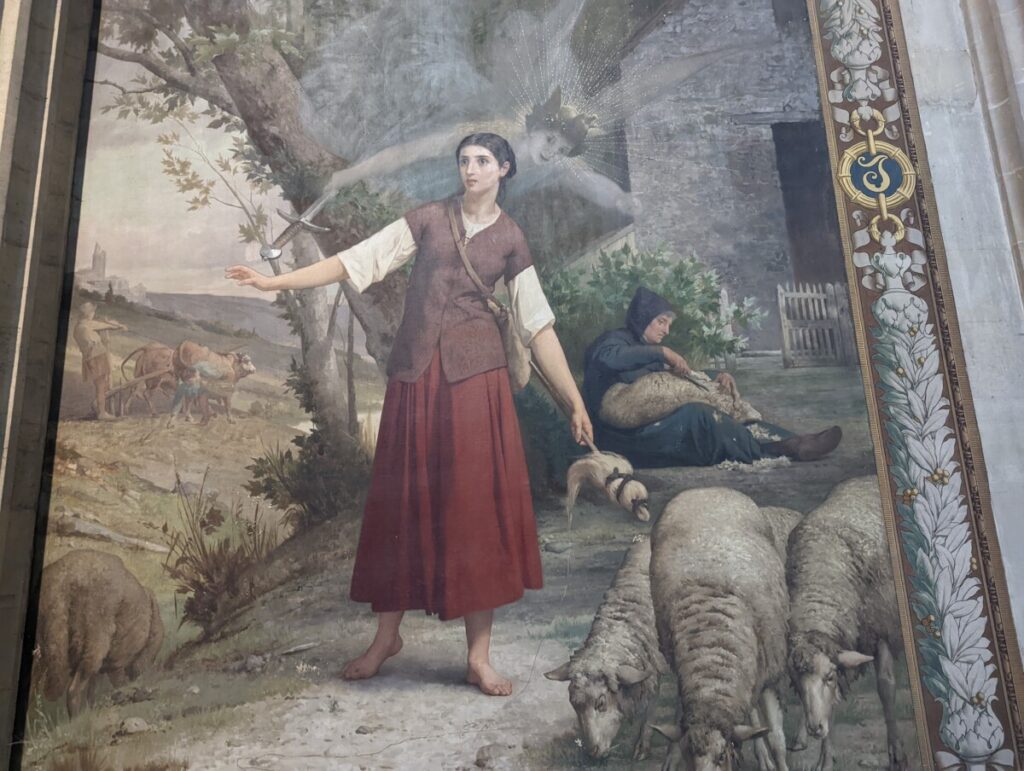
While the sculpture and display works were certainly interesting, it was the murals that caught my eye the most. They were painted in a clearly medieval style, with chaotic scenes made even more interesting to look at due to the practically trademarked uncanny valley facial expressions associated with the style. Many of the scenes depicted were so rife with visual metaphors and symbolism that they practically felt like fever dreams. These almost psychedelic images reminded me of the various types of creative works that would come out of people under the influence of psychoactive substances, with the paintings and sketches they produce often mirroring these chaotic and fantastical elements.
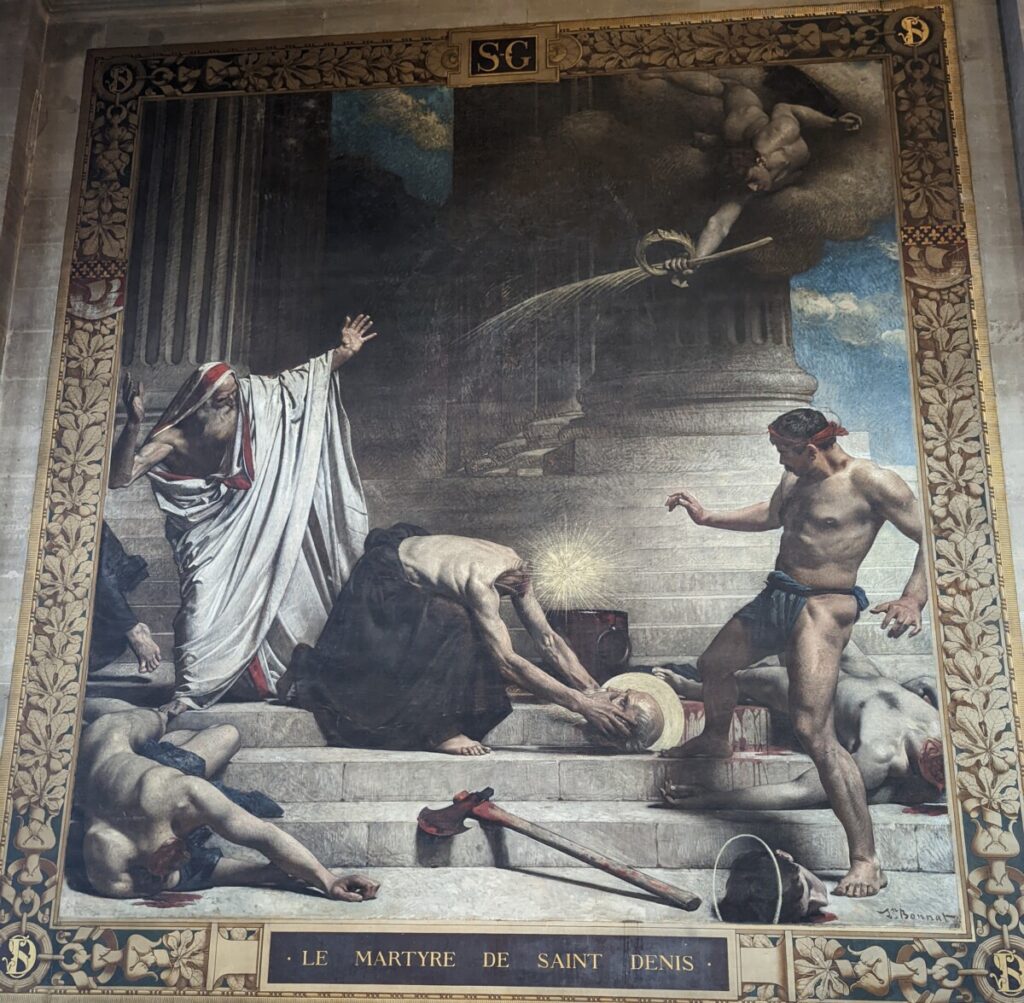
In my research to find out more about these types of experiments, I stumbled across a particularly fascinating article which took a different approach. As we all know, neural networks meant to emulate the neurobiological processes of thinking are being adopted by many computing programs so they can adapt to new information like our own brains. If this is possible, it might be possible of a brain experiencing altered consciousness. This is exactly what Schartner & Timmermann did in their 2020 study to produce a neural model of a brain under the influence of hallucinogenic drug DMT. The model produced could make images with similar distortions to those humans experience under the drug’s influence (Schartner & Timmermann, 2020). Although no one can prove that the artists who made these pieces of medieval art were high as they did so, as technology advances and I see more images like these, my theories inch ever closer to saying “yes, they were.”
Schartner, M. M., & Timmermann, C. (2020). Neural network models for DMT-induced visual hallucinations. Neuroscience of Consciousness, 2020(1). https://doi.org/10.1093/nc/niaa024

